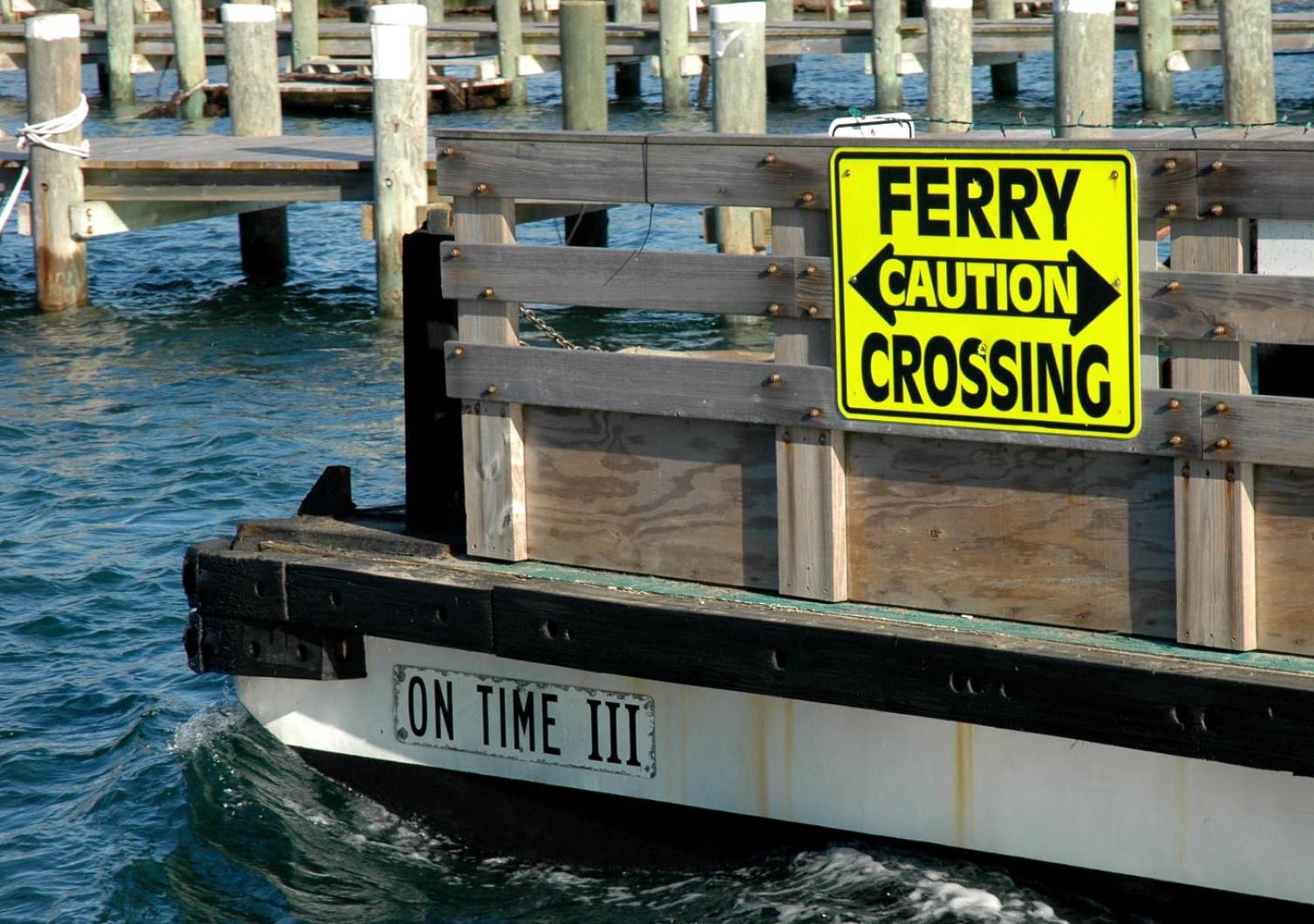The Chappaquiddick ferry, a singular enterprise and sole transportation link for the residents of this tiny island situated off the extreme eastern end of Edgartown, is set to be sold to Peter Wells, a seasoned captain who is a familiar face at the helm of the three-car ferry.
The Edgartown selectmen will hold a public hearing on Tuesday afternoon to consider the transfer of the license and ground lease from ferry owner Roy Hayes to Mr. Wells. Mr. Hayes, who lives in Edgartown, has owned the ferry since 1988.
The hearing begins at 4:30 p.m. in the second floor meeting room of the Edgartown town hall.
Mr. Hayes confirmed yesterday that he has signed a purchase and sale agreement with Mr. Wells. If the license transfer is approved, closing is set for Jan. 28.
Terms and purchase price have not been disclosed but it is understood that Mr. Wells intends to pay Mr. Hayes $3 million for the ferry, which includes ownership of two ferries and a long-term lease with the town for the ramps, slips and small buildings on both sides of the harbor channel.
Mr. Wells and Mr. Hayes have been in talks since late last summer, when Mr. Hayes first began to discuss selling the ferry and offered it to the town for $3 million.
The selectmen appointed a town committee to study the various options for the ferry, including town or private ownership, but in the end the committee reached no clear consensus. By this time Mr. Hayes was well along in his negotiations with Mr. Wells.
A longtime year-round resident and lifelong visitor to Chappaquiddick, Mr. Wells first worked on the ferry as a deck hand in the summer of 1964, with the late Capt. John Willoughby at the helm. In 1974 he moved to the Vineyard after graduating from the Maine Maritime Academy.
At the time the Chappaquididick ferry was owned by Jared Grant. “I remember I had 10 cents in my pocket and I was going to go up to the paper store and buy a Gazette and look for a job,” he recalled this week. “And Jerry Grant said to me, ‘Don’t you have a license for this boat?’ And I said, ‘Yeah.’ And he hired me.”
Mr. Wells worked on the ferry as a captain until 1987 when he left to take a job with Glenn Provost, a Vineyard Haven surveyor. He worked for Mr. Provost for 19 years, retiring last summer and returning to work on the ferry as a captain. “I decided I had to get back to the waterfront — it’s where I love to be, and I love seeing all the people. I’m just glad that I happened to be there when Roy started talking about selling the ferry,” he said.
Through the years Chappaquiddickers always felt secure in the knowledge that if there was a problem, Peter Wells could go down and run the ferry.
And at times he did.
“I like driving the ferry, I like being on the water and I think I know how the Chappaquiddickers think,” he said.
About 100 people live on Chappy year-round; the population swells to many times that number in the summer months. In summer the ferry is a two-barge operation, shuttling cars, trucks and people back and forth from early morning until midnight. The eastern shore of Chappaquiddick includes some 600 acres of barrier beach and wildlife refuge that attracts thousands of beachgoers, fishermen and bird watchers. In winter traffic slows considerably and consists of mainly year-round residents, contractors, scallopers and a handful of visitors.
Chappaquiddick residents — especially the year-round residents, who are known to be a hardy and independent breed — are closely tied to the little ferry which is their lifeline.
Named the On Time, the ferry itself is a unique rig — actually two rigs — essentially open-decked barges operated by diesel engines. The ferries carry three, and sometimes four cars at a time, as well as foot passengers. Until recently a sign at the ferry still posted a fare for horses.
“I don’t think we’ve carried any horses for a number of years,” Mr. Hayes said.
There are three fare tiers: cash and two types of discount ticket books, one reserved for year-round residents.
The ferry has historically been privately owned, although for a long time in the 1960s and 1970s the town owned and maintained the ramps and slips.
Mr. Hayes took ownership of the ramps, slips and ferry sheds on both sides of the harbor from the town in 1991, and subsequently rebuilt and refurbished them at his own expense. With the help of a welder, Mr. Hayes rebuilt the ramps at the town highway department barn and installed them himself.
He has a 75-year ground lease with the town for $1 a year. In exchange, the town has the right to take back ownership of the ramps and slips if the ferry owner fails to maintain them.
Selectmen still license the ferry and set the maximum cash fares; ticket discounts are at the discretion of the ferry owner.
“It’s quite unusual,” Mr. Wells agreed. He has been quietly exploring the possibility of buying a third boat once he takes over the operation, although he emphasized that no decision has been made yet. He said he found a similar ferry in Balboa, Calif., situated off San Diego, but could find nothing else quite like the Chappy ferry.
The ferry plies a narrow channel in the Edgartown harbor where the tide runs hard — and even harder since the breach opened at Katama in an April storm last year.
So it is a short but sometimes challenging trip across.
But Mr. Wells, who is 55, loves the whole experience. Besides, he said, there is a practical side to his decision.
“I have five grandchildren. And they are all going to need summer jobs. So they can come and work for me on the ferry,” he said.





Comments
Comment policy »